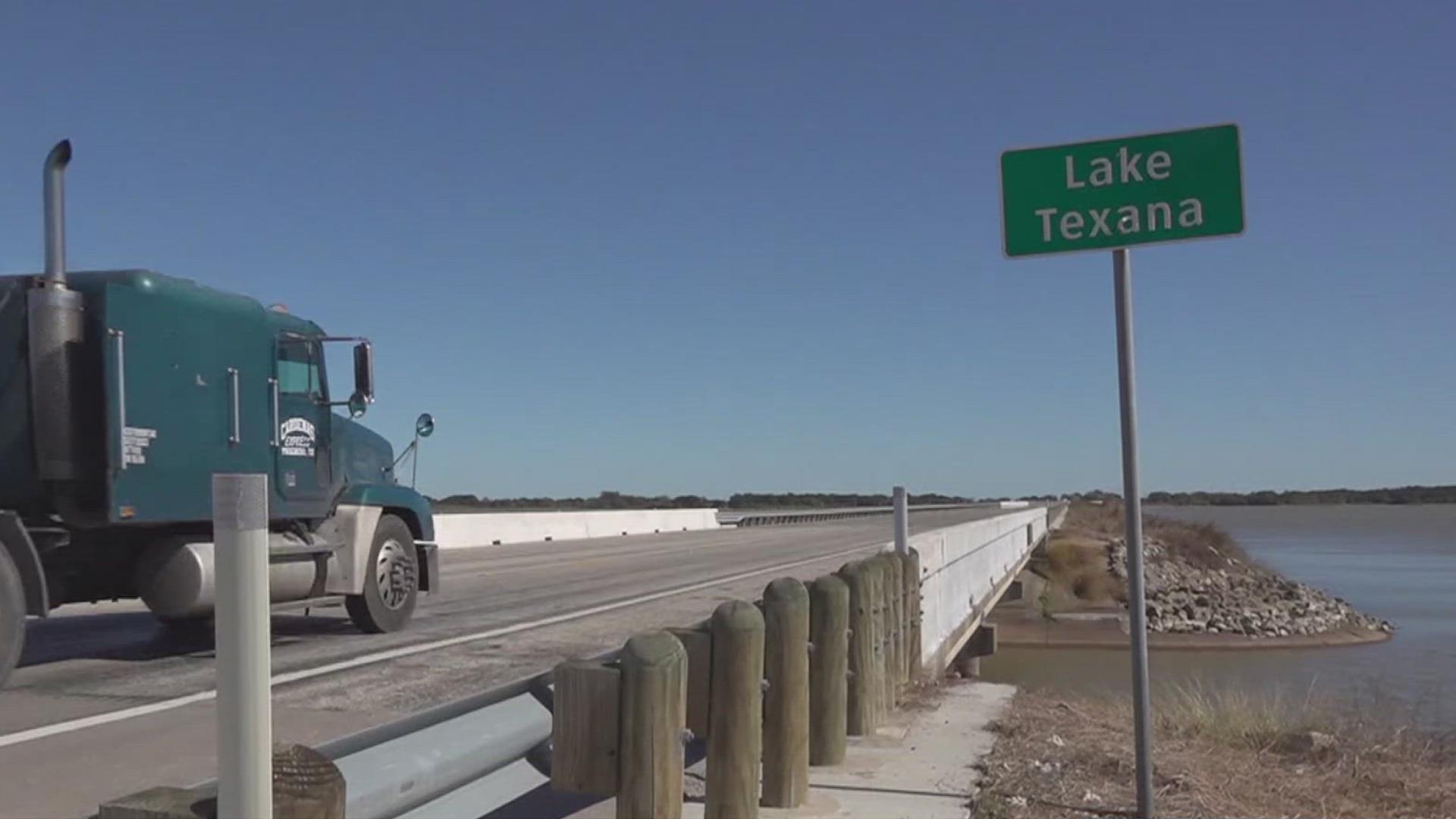CORPUS CHRISTI, Texas — As the City of Corpus Christi borders on Stage 3 water restrictions, leaders are looking to amp up flow from the Mary Rhodes Pipeline which carries water from Lake Texana and the lower Colorado River.
It's a journey of over 100-miles to get that water through the pipe to the O.N. Stevens Water Treatment Plant.
On Wednesday, city leaders, including City Manager Peter Zanoni and Corpus Christi Water COO Drew Molly, traveled north to see that much needed water source firsthand and what it takes to get it here.
Lake Texana is near the town of Edna and looks more like an ocean when you compare it to the dwindling combined water levels at Lake Corpus Christi and Choke Canyon Reservoir.
It's capacity might be less, but the lake is nearly 80 percent full, proving to be a vital source for Corpus Christi's water supply.
"There is more rainfall in this watershed than in the Nueces River watershed, and so because of that mere fact, this is a very reliable water supply for us," Molly said.
He along with the city manager and other city staff traveled to Edna to meet Wednesday with the Lavaca-Navidad River Authority.
Corpus Christi is one of their biggest customers.
"So I think the community is looking for water resiliency and so this will always be an important part of our water supply, even when we develop seawater desalination," Molly said.
"I always say it's like the little train that could, we're the smallest major reservoir -- actually river basin -- in the state of Texas, so when you look at the water produced at Lake Texana in our watershed, we're in a kind of sweet zone if you will," Lavaca-Navidad River Authority General Manager Patrick Brzozowski.
The City of Corpus Christi now gets more than half of it's water supply from Lake Texana with more than 55 million gallons of water per day, piped through the Mary Rhodes Pipeline.
The city is hoping to crank the dial up even more, something City Manager Zanoni says could happen within months.
"The goal in the next couple of months is to increase that by 20 million gallons to be 75 million gallons of water coming through; so seeing the operation, meeting our teammates that work out here, who live here and work here and who have been servicing the city for over 25 years is important," he said. "We want to make sure they know we care, we care about our relationship and we're thankful for the work they do."
A recent assessment of the Mary Rhodes Pipeline showed it's in good shape for its age.
The group got a tour of several pumping stations that help push that water to Corpus Christi, including a facility in Bay City at the lower Colorado River.
However, work will need to happen to make sure they're able to optimize the amount of water running through the 100-plus miles of pipeline.
"You have to put additional pumping equipment in, other types of regulating equipment into the pipeline, electrical work with AEP Texas," Zanoni said. "It's a $12 million project in total, but that'll bring 20 million gallons of water to Corpus Christi every day."

